Medieval Computers
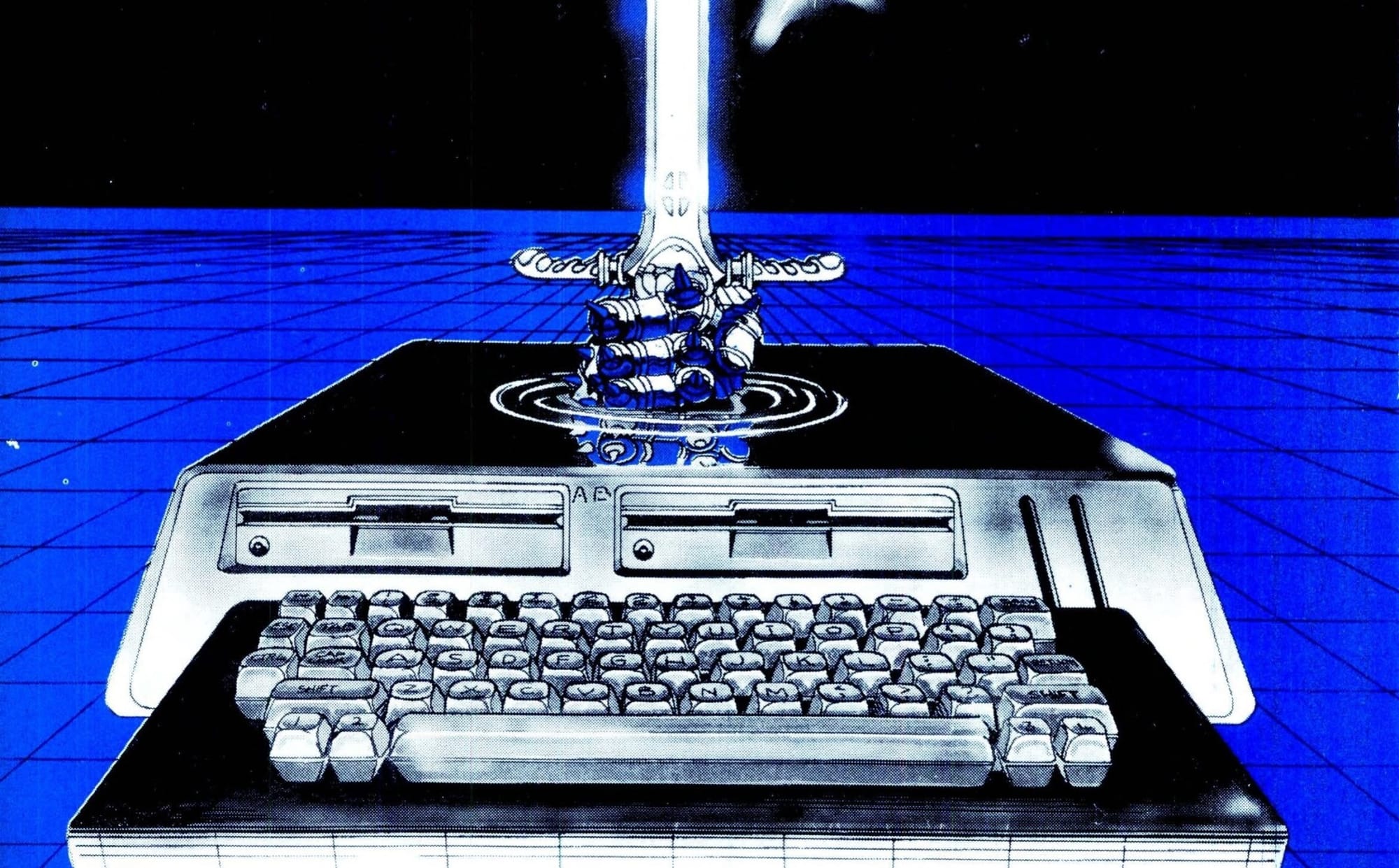
The kids are into medieval stuff these days. Memes, playlists, mall wizard tiktoks. A social media brand strategist just mentioned "medieval vibes" as a visual trend in a recent interview.
A lot of those medieval vibes come with a little 80s-era retro flavor, which adds the extra candy-coating I need to really enjoy it. I recently spent an entire week slowly working through this huge playlist of dungeon synth, a fantasy-themed electronic music subgenre. This introduction to the subgenre even connects the trend directly to the internet – solitary experimenters were only able to create a community from scratch by finding each other virtually. I wonder if there's a similar connection to make with the today's algorithms and medieval memes.
Anyway, sci-fi artists have a long history with medieval subject matter, and in the 80s and 90s in particular, medieval and high fantasy iconography was huge among illustrators trying to get consumers hyped up about new-fangled computers.
Take the 1992 uncredited box art for the Lord Monarch real-time strategy war game, for example. This is as "medieval computer" as it gets, complete with an ornate gold-plated keyboard and mouse.
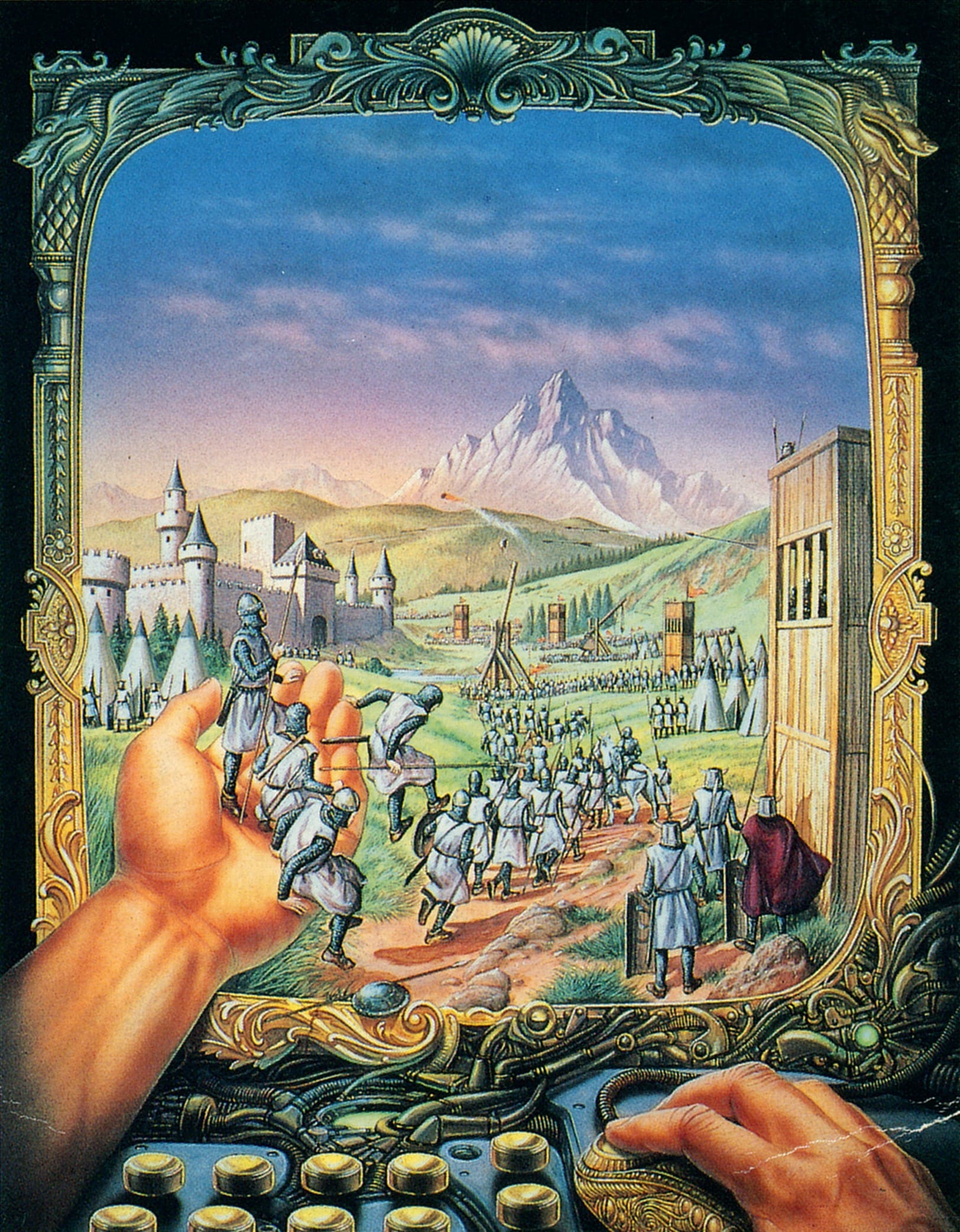
Before we get too far into it, though: A big thanks to Lookcaitlin, who runs this incredible tumblr archive of '70s-'90s retro tech illustrations. Artists are cited whenever possible and every image is linked to its source magazine or book on archive.org. It's an amazing resource that you should spend a few hours getting lost in. Probably my favorite tumblr blog ever right now, and I can't credit them enough: I found every image and artist credit in this particular issue through Lookcaitlin! Give 'em a follow - they're on bluesky as well.
Here's an uncredited ad from Microcomputing magazine, July 1981, that positions a video display terminal as scary and mystical.

More often, the computer was the coveted prize within a sword-and-sorcery world. The uncredited November 1983 cover to ComputingToday puts it on a literal pedestal.
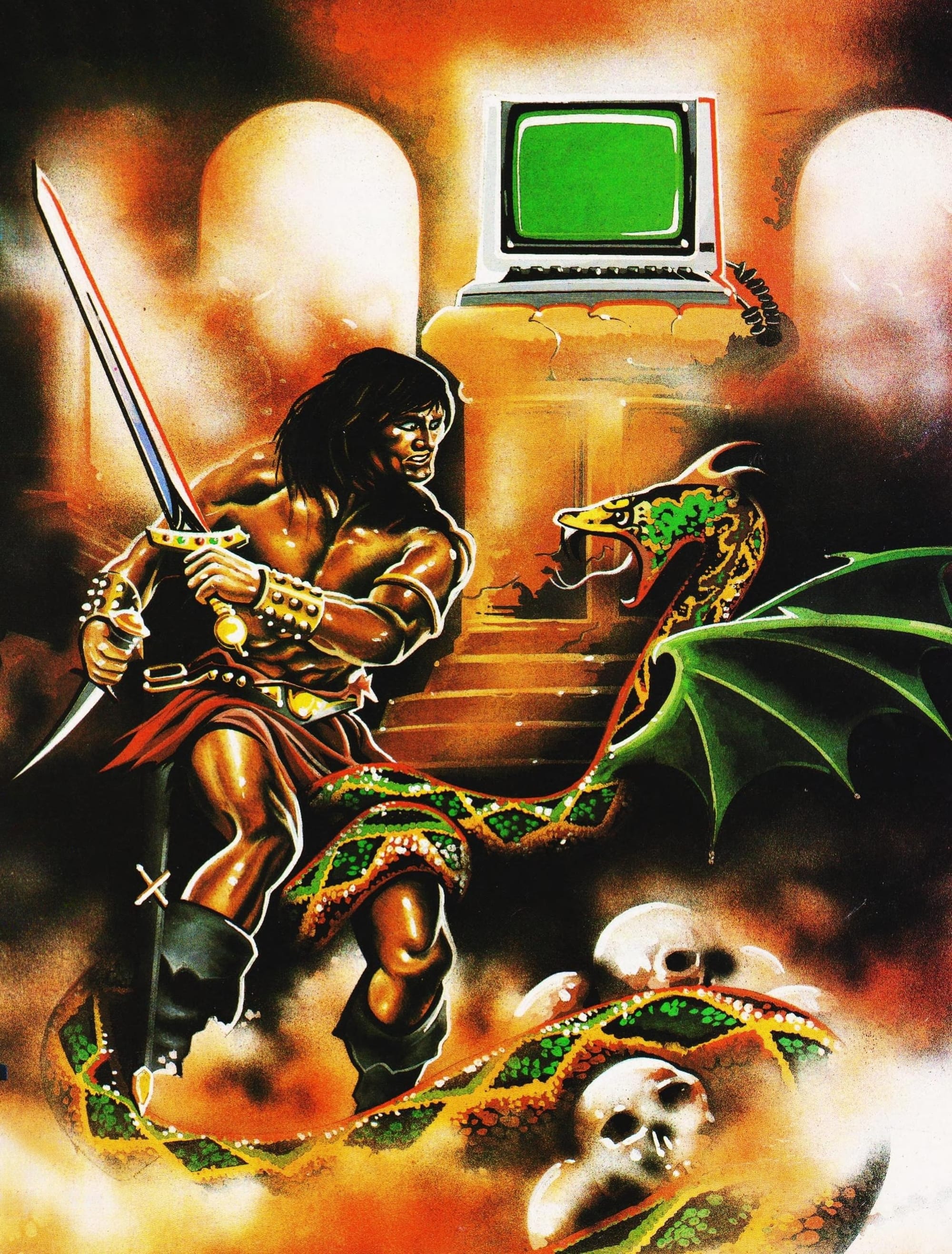
Tim Amrhein's 1993 cover art to "Tom Swan's Code Secrets" takes a similar approach. Can anyone who was coding with C++ in 1993 confirm whether it actually gave you biceps the size of your head?
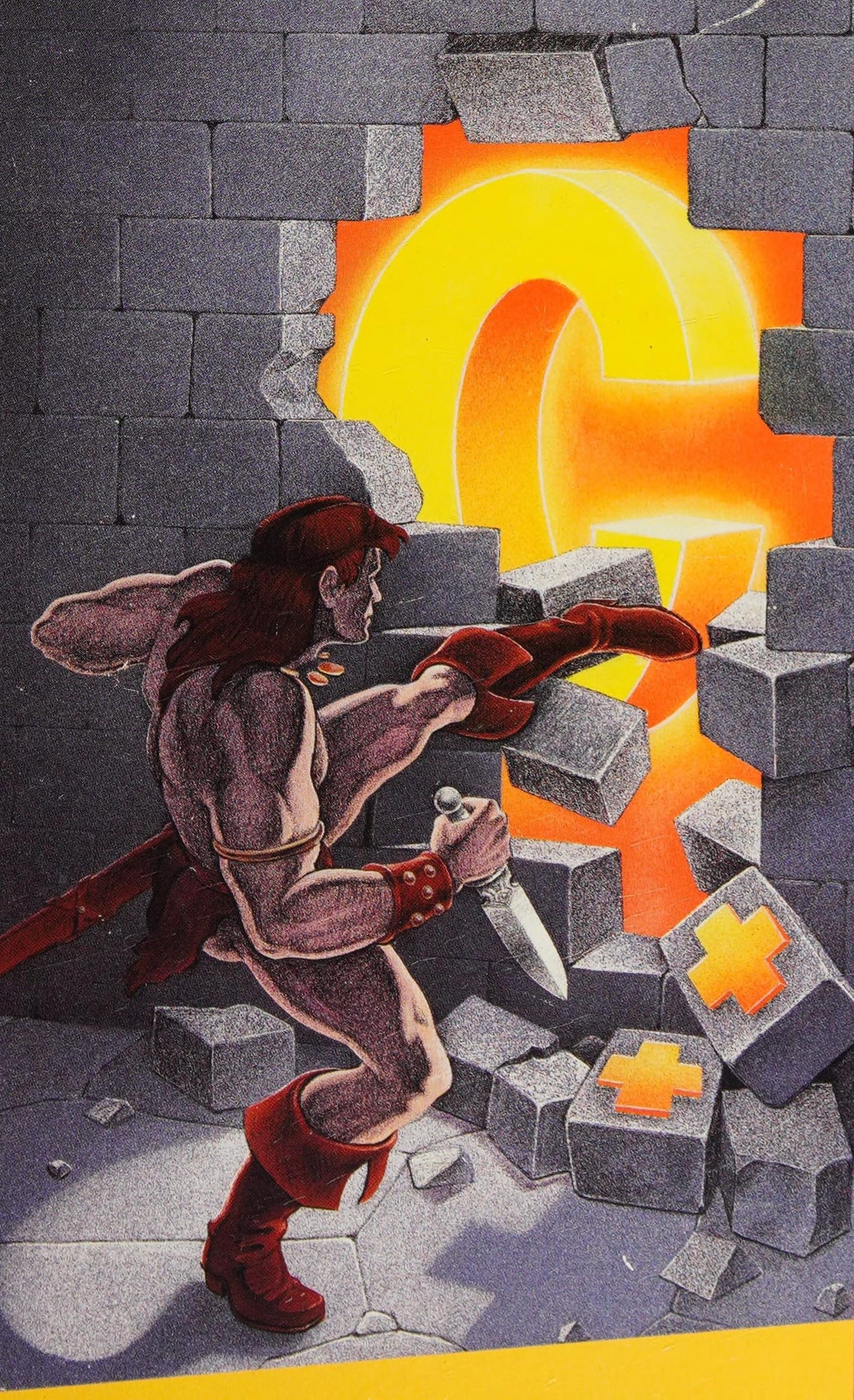
Then there's this Kevin McKeon illustration for Softtalk's February 1984 cover story "Tale of the Ports: How expandable is your PC?" I guess a tree growing out of your PC-slash-house is sort of "expandable."
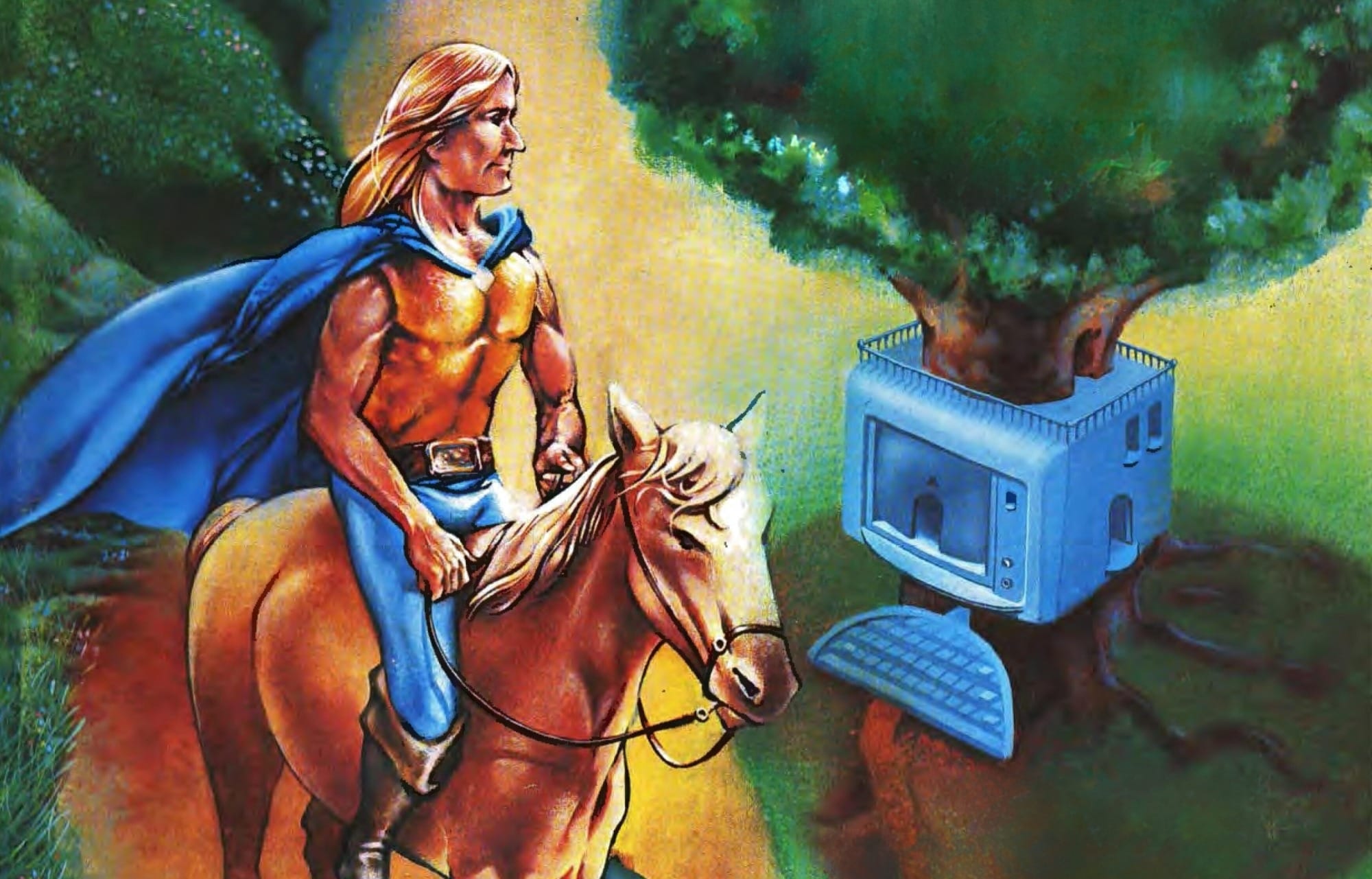
Check out the story itself, however, and you'll be treated to a two-page long "fable" illustrated with the efforts of a second, uncredited artist. The story does indeed involve the creation of a PC/tree/house.

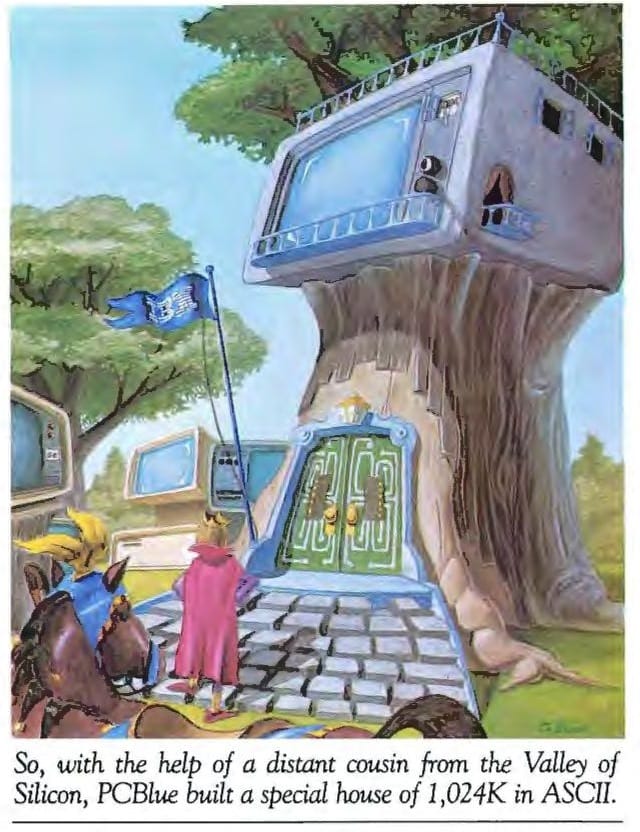
This strikes me as a big reason why retro tech mags reached for the generic medieval age so often: It provides a quasi-historical empty page from a pre-industrial era that can be used to hammer home whatever potentially dry and boring points about ASCII (or whatever) these magazines were trying to zhuzh up.
Another big reason: Puns. Here's a 1995 ad illustration by Christopher Polentz.
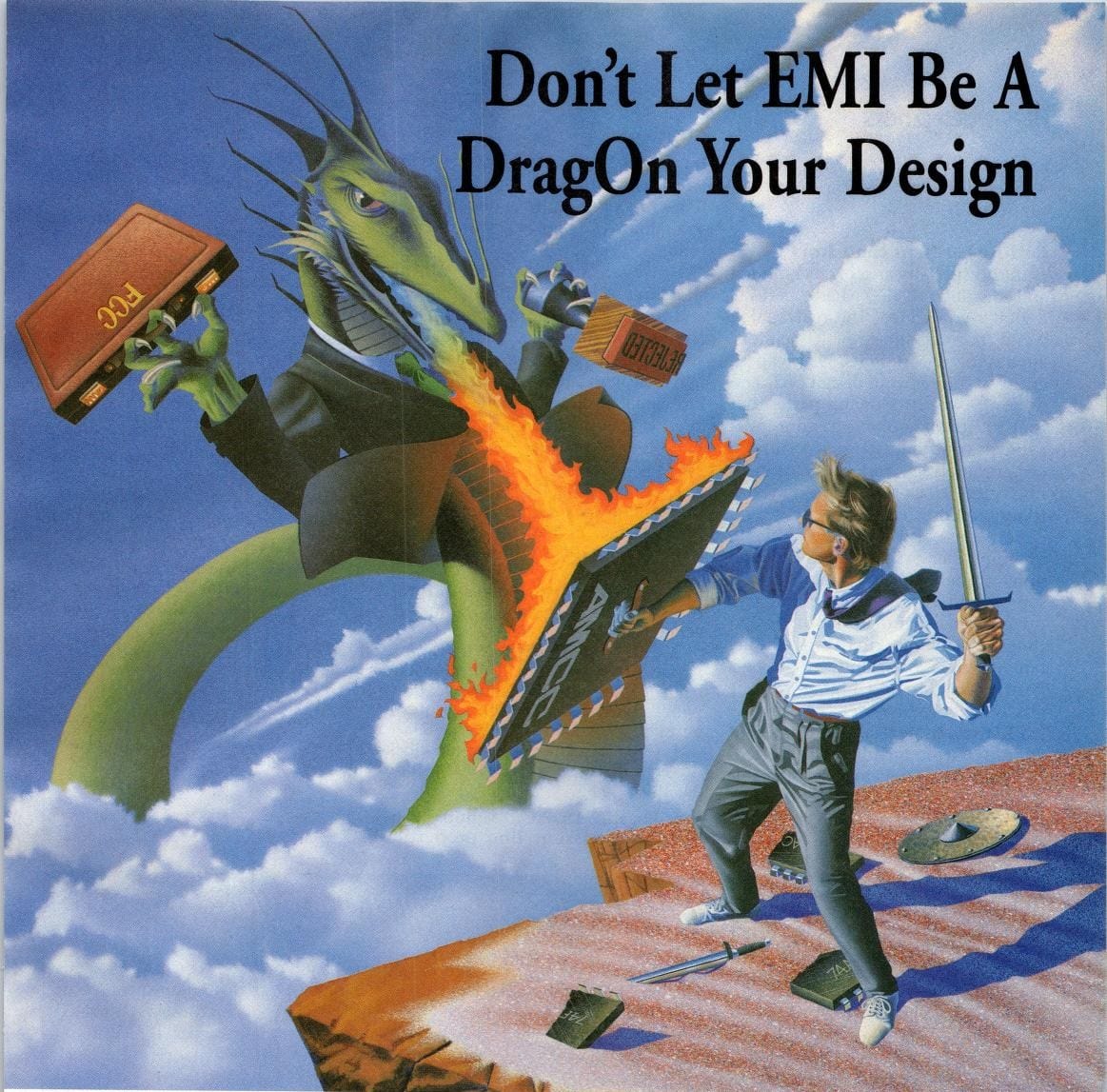
Another fantasy-inspired pun for Charles Shields' ad illustration in the June 1980 issue of Computer Design: The tagline here was "Avoid the nightmares in microprocessor design."

One of my favorite illustrations in this article is this gorgeous blue and black depiction of a sword emerging from a placid computer pool. The artist isn't credited, but it's from a 1983 four-page ad for the Australian Excalibur 64 computer. Here, the fantasy theme extends to the brandname itself.
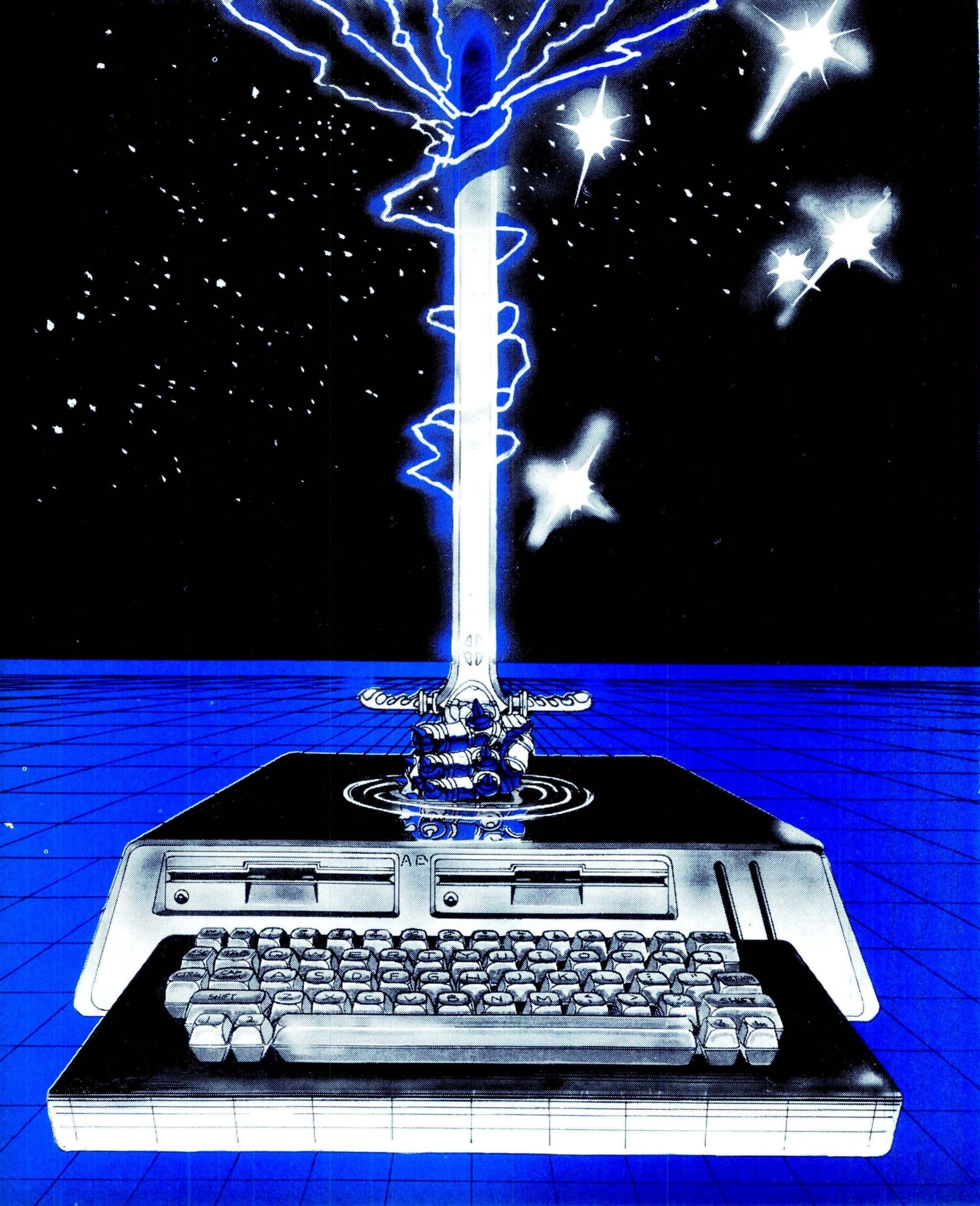
There's more information about the computer itself over here – as well as a critique of that exact ad illustration "Not sure who was in charge of this 1984 advertising!? How NOT to sell a computer."
A knight features heavily in this uncredited 1985 ad, designed to sell interactive "Electronic Novels."

Naturally, wizards showed up all the time, since they're an easy visual shorthand for telling audiences that writing software is basically creating magic spells. Here's Kevin Caddell's 1987 cover to Tricks of the MS-DOS Masters. That floppy disk gold chain needs to exist for real.

This uncredited 1988 illustration to a MacUser article about "buried treasures" within the WordPerfect program takes the exact same approach. The wizard even has the same pose.
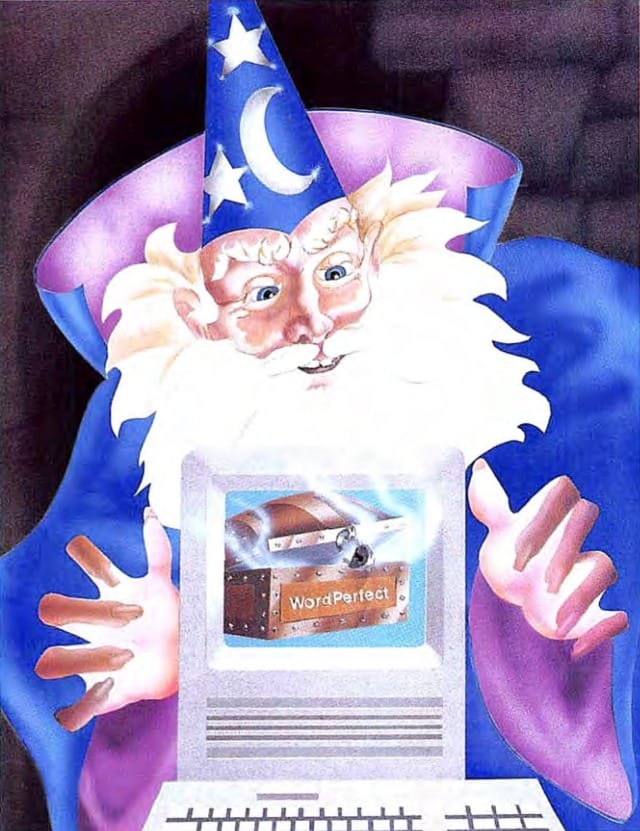
Double the arms and you get this wizard! It's Mike Kanarek's cover illustration for an April 1984 PC Mag story about integrated software.

Nick Farmer and Nick Mijnheer's 1984 interior illustration for Input: Volume 4 puts the wizard inside the guts of the computer itself.
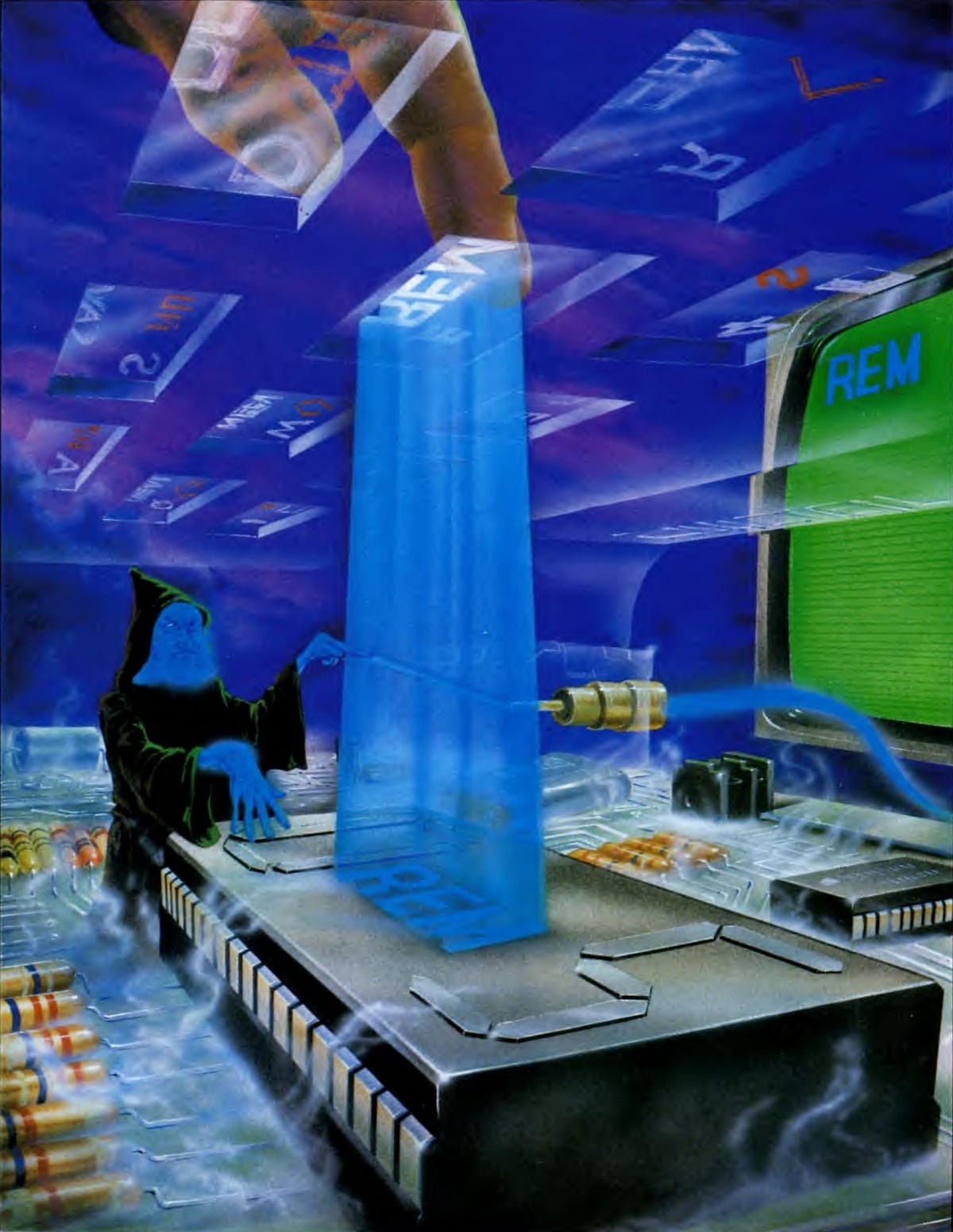
My biggest takeaway from this wizard cover – by William Giese and Damian Henriques, August 1983 – is that there was once an Apple II-themed glossy magazine called "InCider." Who allowed that pun? The '80s were a lawless time.
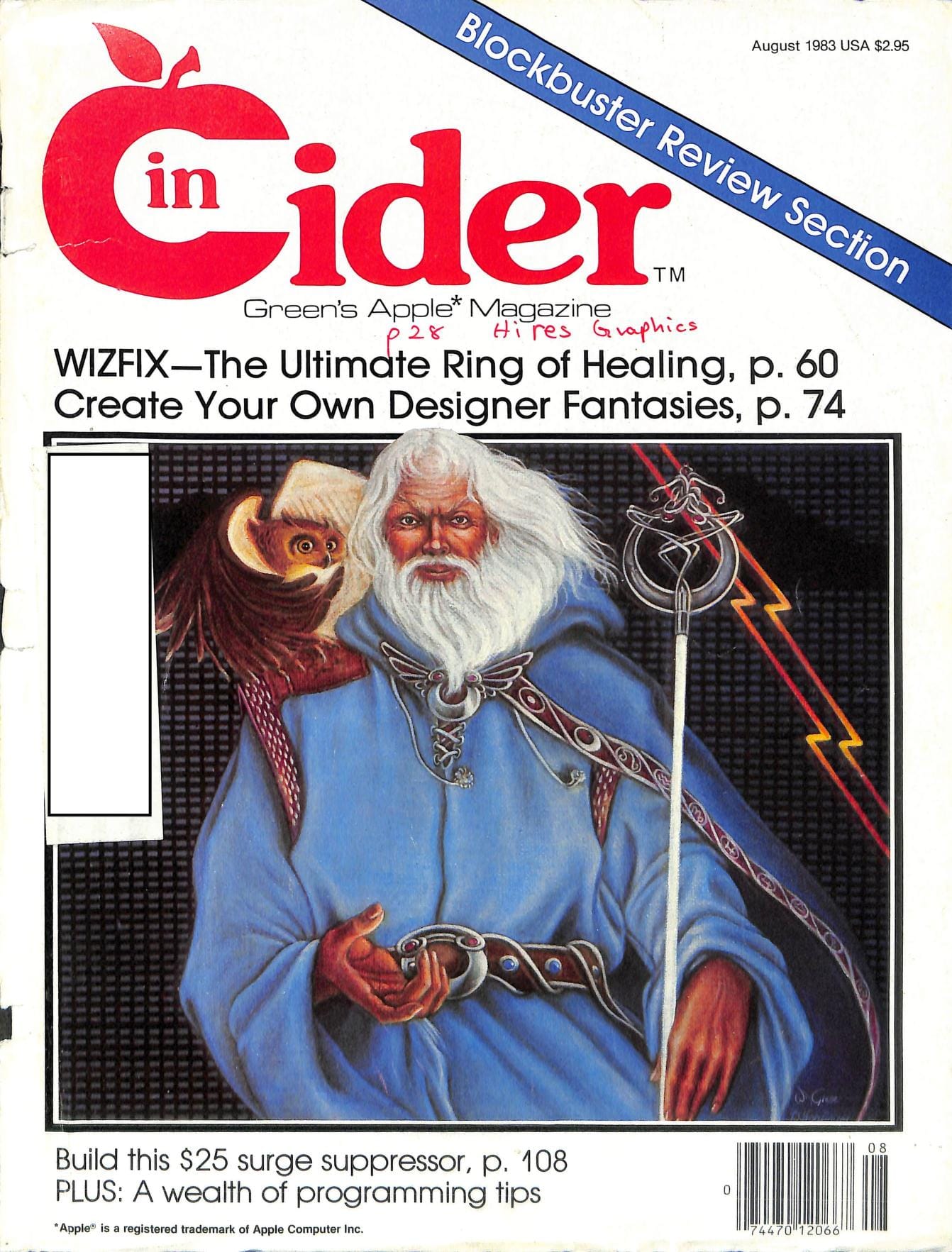
Since we've circled back to puns already: this November 1983 Byte ad used the tagline "Computer System Designs Source-rer."
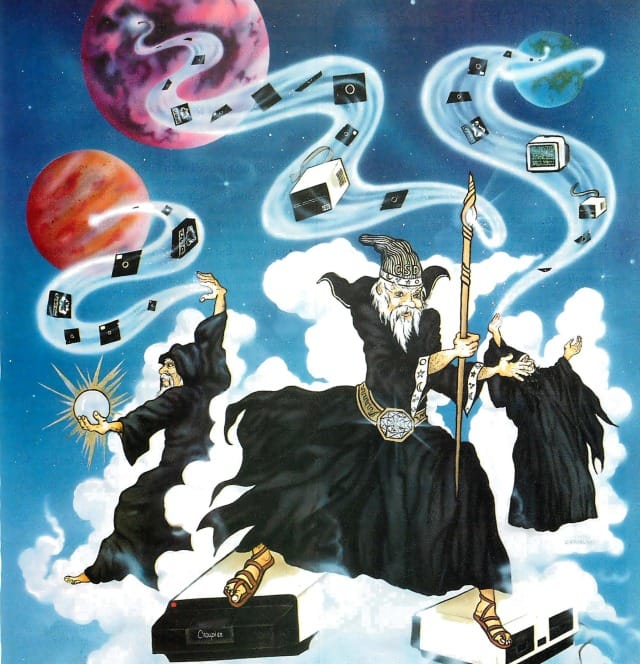
Witches occasionally got into the mix as well, if Halloween was around the corner. Here's Don Dyen, for the Oct/Nov 1982 issue of Commodore MicroComputer.
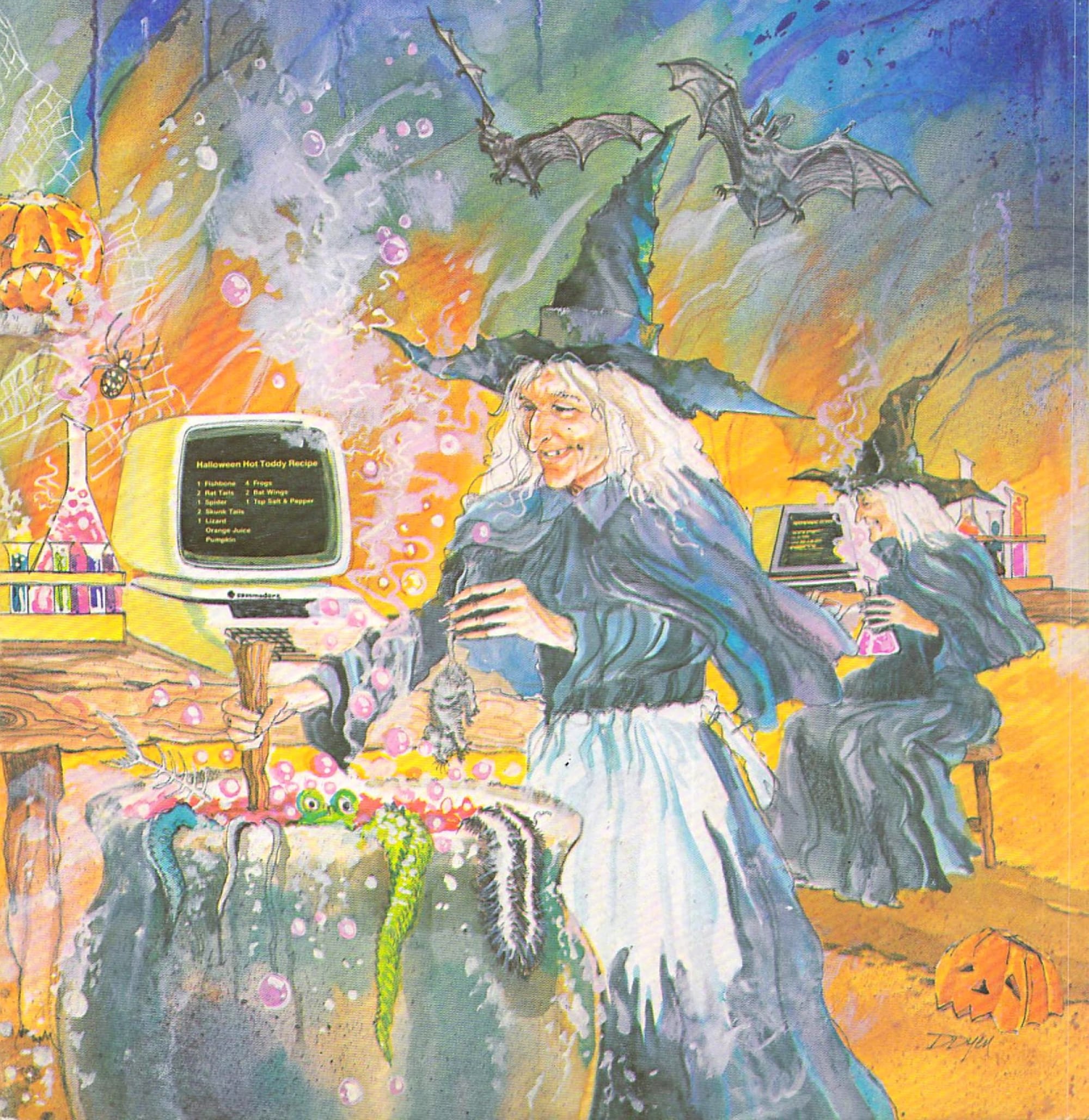
This 1981 Digital Design ad illustration by Ron Wicks leans into the Cinderella fairytale to make a point about how well its cartridge fits into a tape drive.
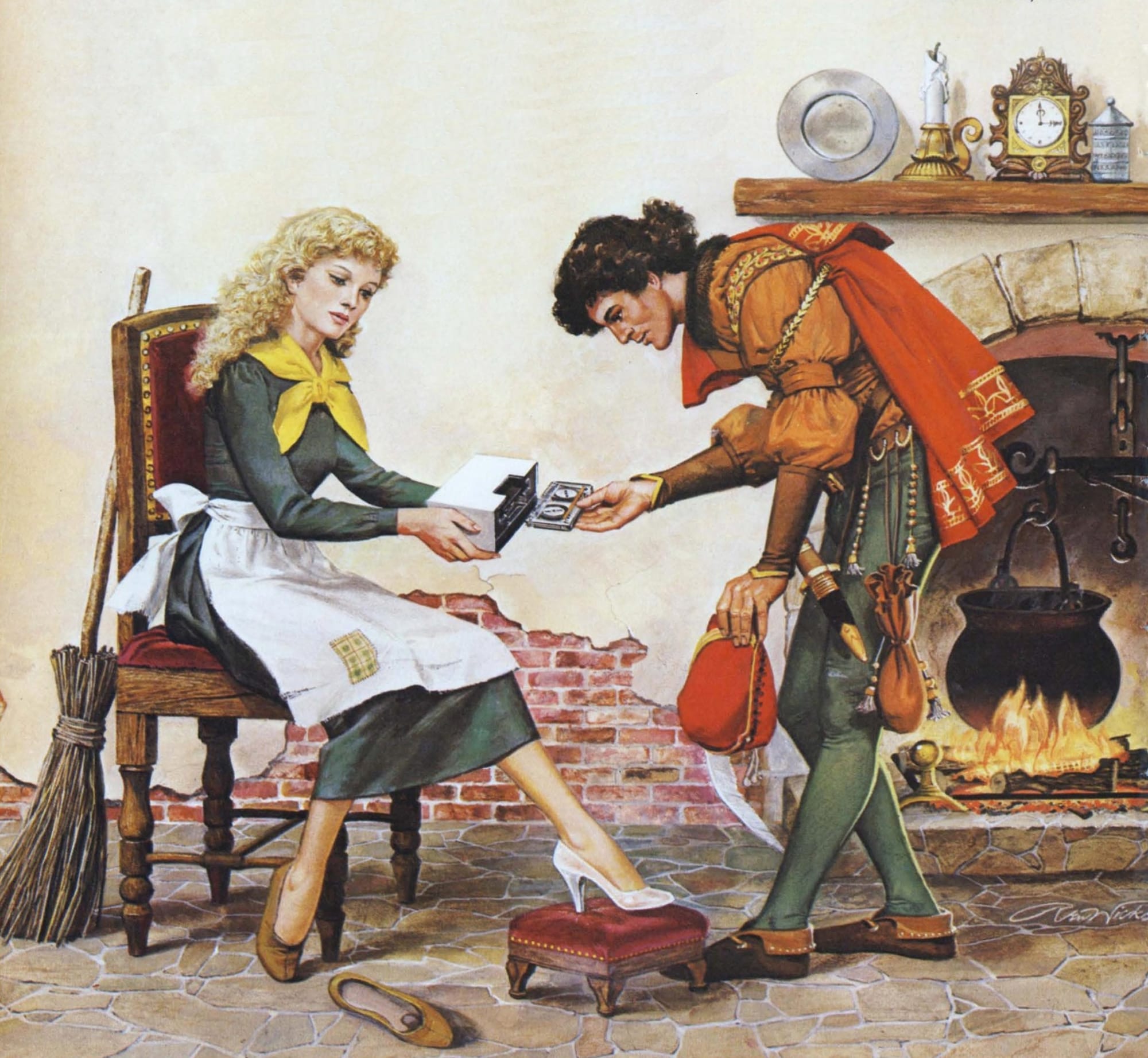
As you may have noticed, I'm playing fast and loose with the definition of "medival" here. Computer magazines were eager to make any association with cool eras across the entire historical record, really, from ancient Rome to Leonardo Da Vinci to this illustration of Edgar Allen Poe at a desktop.
Naturally, a Stonehenge keyboard showed up on an uncredited cover to Sinclair QL World in August 1991.


I have a cropped version that's a good quality and a full version that's bad quality; take your pick.
I'm not sure what era these knights on the August 1984 cover of Micro Adventurer are from. The artist is uncredited, but Lookcaitlin guesses it might be Stuart Hughes based on the style.
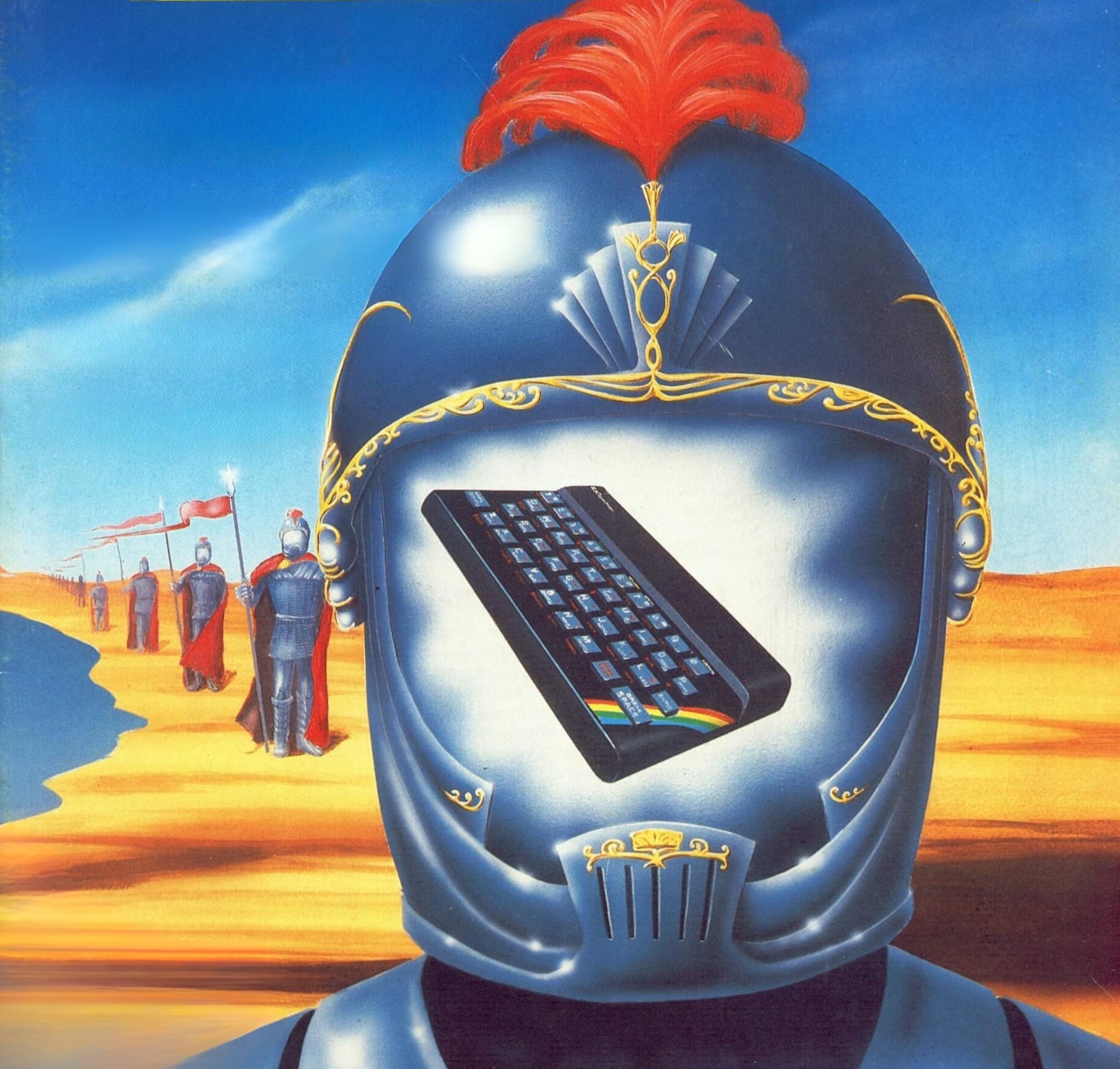
In a particularly meta one, Serbian computer magazine Svet Kompjutera's February 1988 cover looks back at Don Quixote, a guy who is himself looking back at the fantasy of the medieval era.

Retro tech magazines didn't just stick to illustrations, either. Here are a couple funky photoshoots that also double as a good meme to send to any friends who play Baldur's Gate 3.

So, what have we learned about the love affair between 80s/90s tech mag illustration and the medieval/fantasy aesthetic? Nerds needed an era that felt historical but wasn't tied down to specifics, existed so long before technology that adding computers created a satisfying contrast, and that could be used to suggest that coding was magical or turned users into badass warriors.
30 years later, things haven't changed all that much: "Palantir is a unicorn" is a phrase that makes sense to anyone in the tech business.
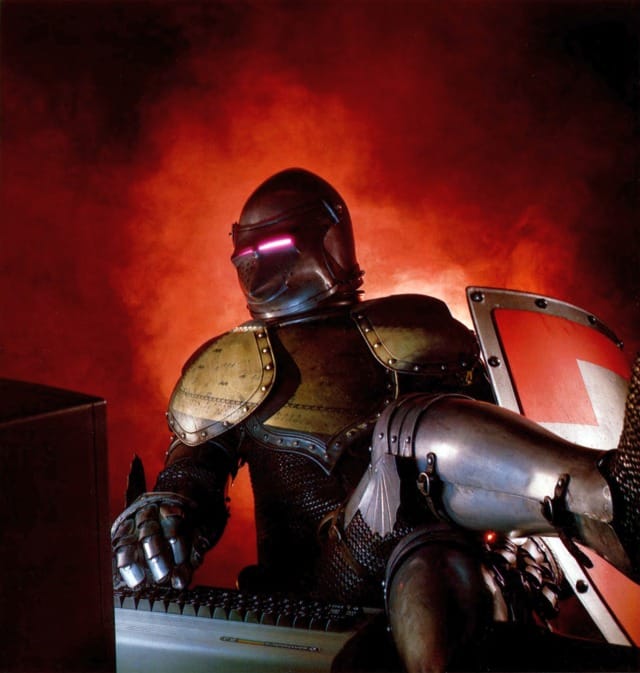
Next Time: Gas Masks